Reaction Wheel Performance
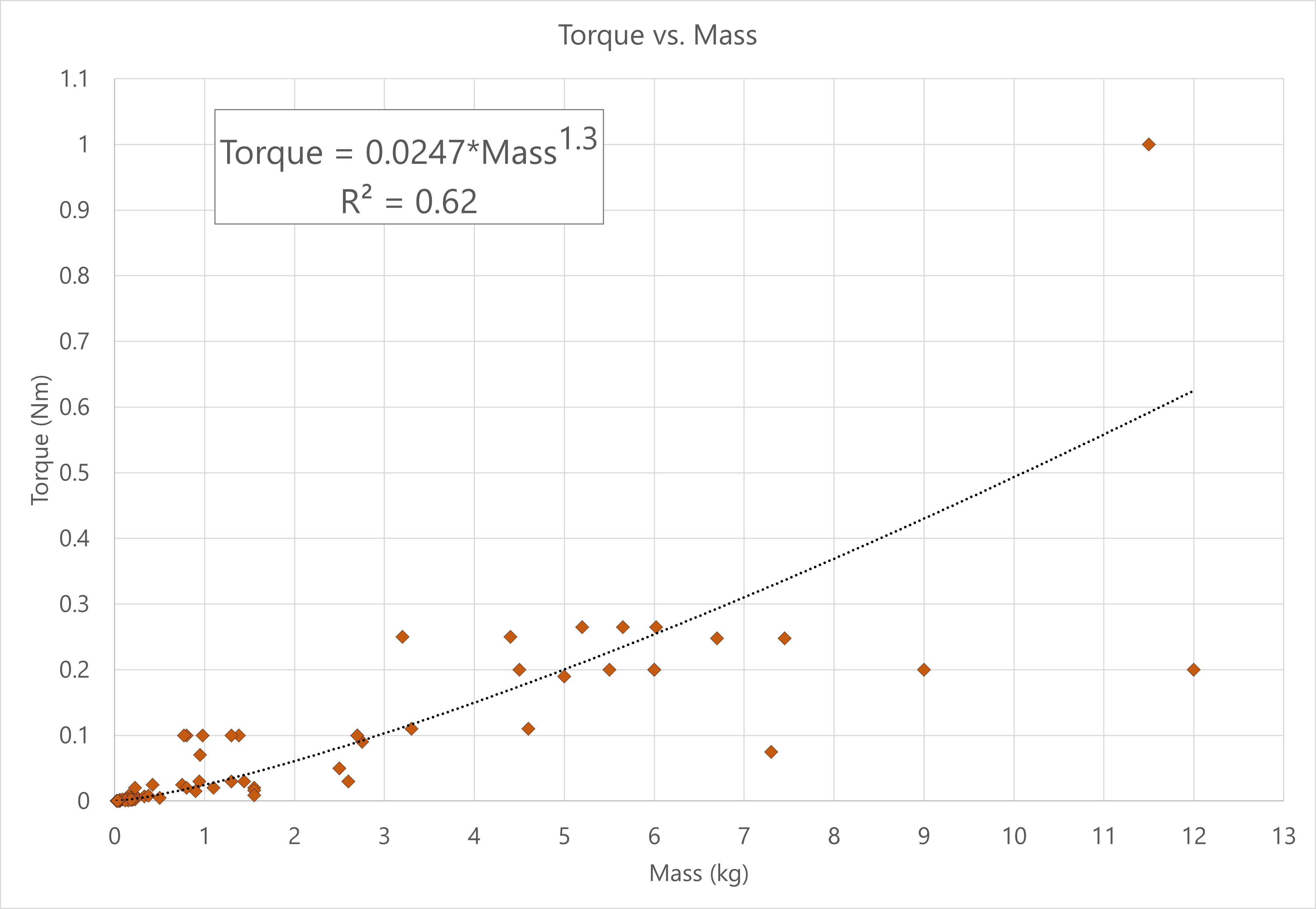
Key Points
- There are 66 reaction wheels from 18 vendors in this analysis. The data were last verified in November 2021.
- Treat these plots as indicative of what you can expect. Some of the properties are peak values or do not take everything into consideration. For example, some of the smallest wheels require control electronics that are not part of the wheel’s mass. And some properties are out of family with other data to an extent that should motivate you to dig deeper.
- Most reaction wheels are 6kg or less, store 25 Nms of momentum or less, and create 0.3 Nm of torque or less. Beyond these values, you’re moving into regions where Control Moment Gyroscopes may be a better solution for you.
Reaction Wheel Performance
This article looks at the properties of reaction wheels you can buy. You may find some of the equations and data useful as you consider how to design your own system.
Communication Protocols
Before jumping to the plots, it’s worth pointing out that there is a variety of ways vendors allow you to communicate with their wheels. Most of the larger vendors give you several options (and will allow you to pay them more to add your preferred option), while smaller vendors will give you one “take it or leave it” communication method.
The most popular is RS-422 with about three quarters of the vendors offering it. In second place is RS-485 and CAN comes in third. I2C, UART, and 1553 round out the bottom of the list in that order.
This is one of those gotchas where you pick the “perfect” reaction wheel and avionics board and then figure out they don’t talk to each other. Be sure to check!
Momentum Storage vs. Mass
These plots tell you how much angular momentum the wheel can take before it “Saturates”. Beyond these levels, any additional torque would push the wheel faster than the system can handle.
The first plot shows all the data. You can see that most of the reaction wheels you can buy are designed for very small satellites. The data in the region below about 3 kg has a consistent trend, demonstrating that the laws of physics constrain vendors in ways that make them hard to differentiate. In this region, you’re looking for non-physical differentiators like price and documentation.
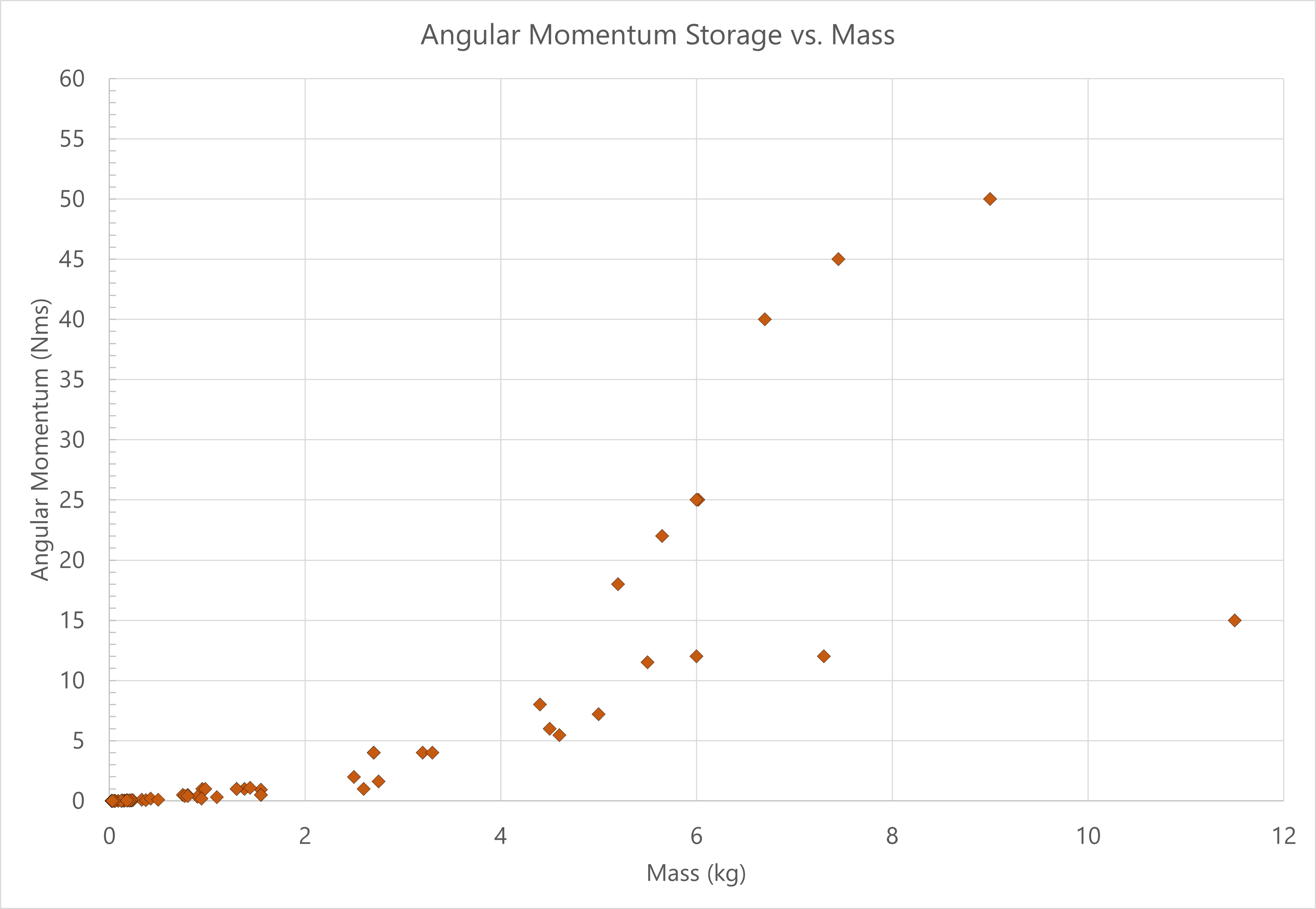
The second plot zooms into the region where most of the data falls. It also provides an equation to help you estimate properties. This plot makes it more clear that most of the market for reaction wheels is focused on wheels with masses less than about 0.5 kg.
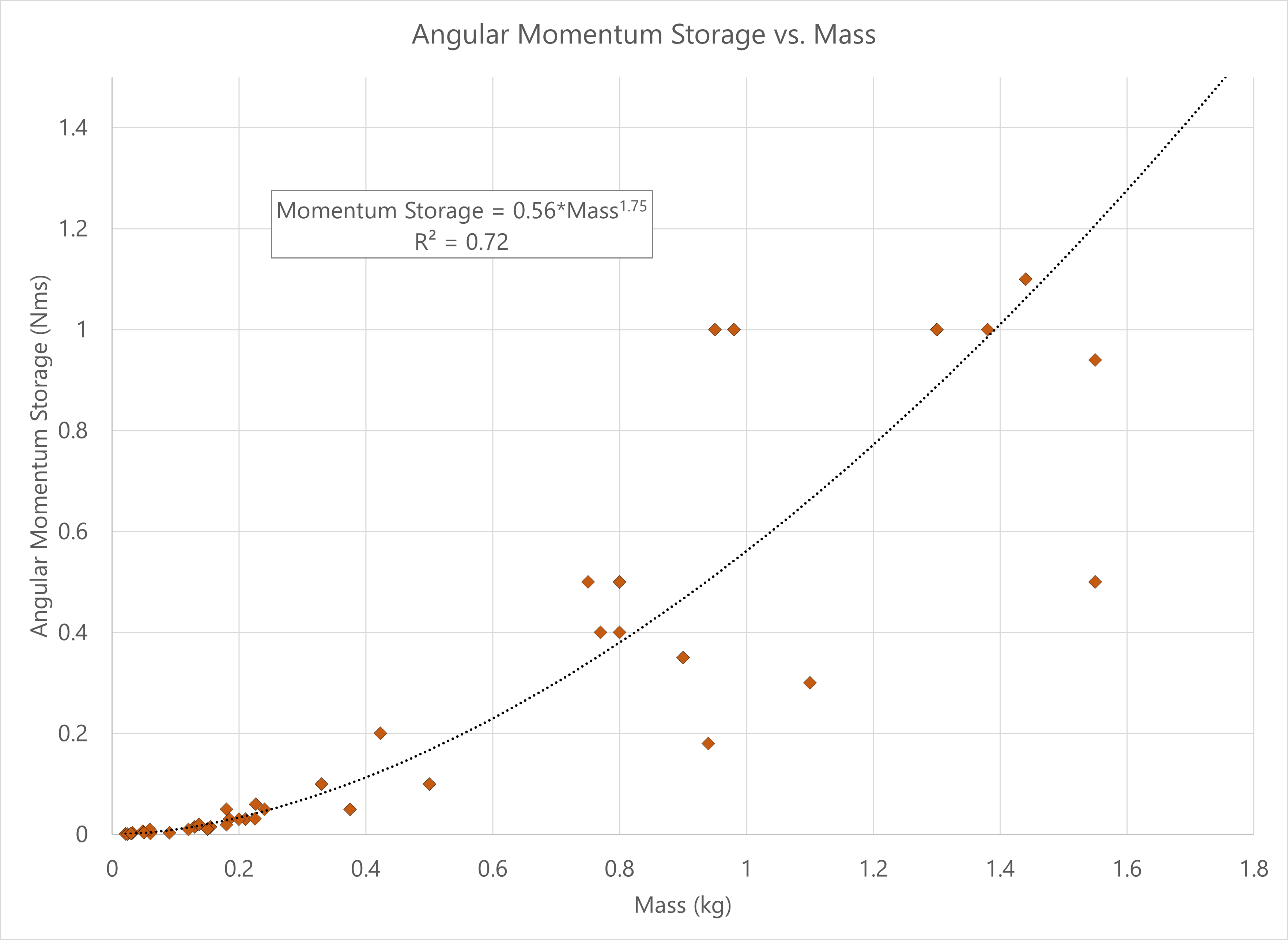
Torque vs. Mass
This plot helps you understand how quickly you can maneuver your spacecraft. Note that these are peak values and most nominal values that vendors recommend for long life are roughly half of the peak. In fact, a primary reason for peak torque variation in the plot are the vendor design choices related to life vs. peak torque.

Interestingly, the peak torques tend to fall below 0.3 Nm regardless of the mass of the system. If a novice were to guess how much peak torque most small spacecraft need, a good guess would be to follow market forces that design for less than 0.3 Nm!
Angular Momentum Storage/Torque vs. Mass
The ratio of maximum angular momentum storage vs. the peak torque gives you insight into how long you can run your wheel at peak torque before you saturate. (Hint: not very long!) While some may be surprised at the fairly low ratios for most wheels, consider that it’s rare to want to kick hard in a direction for long before you want to kick back the other way. For instance, if you’re trying to point rapidly at a new target, you want to get there quickly and stop quickly; you’re almost never trying to kick hard in the same direction for more than a few seconds.
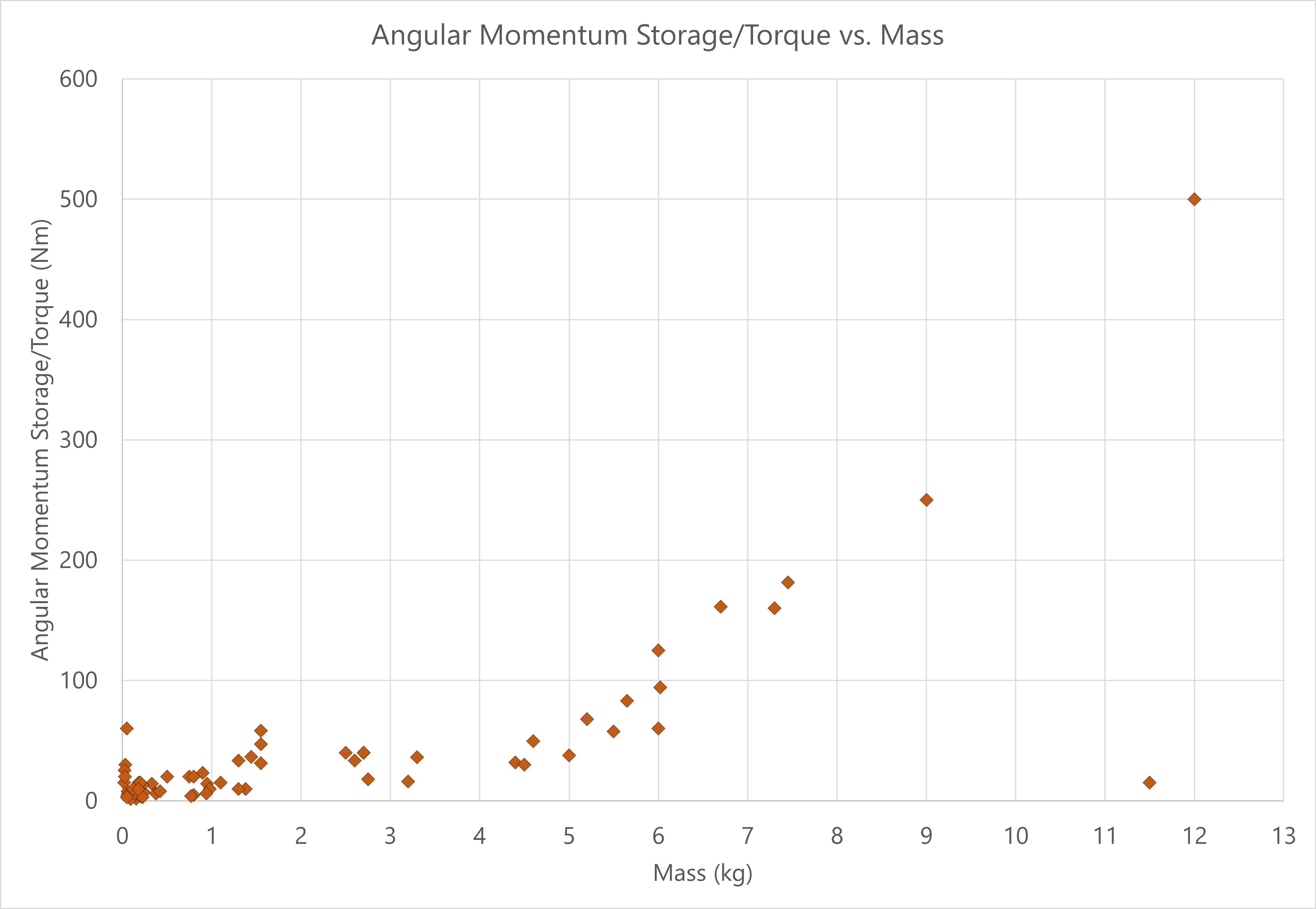
The second plot zooms in and provides a parametric equation, for those interested. Note that at masses very close to zero, the torque tends to be tiny (like fractions of a milli-Nm) so there’s something of a “singularity” effect at the smallest range.

The third plot zooms in further to better show the scatter at the lowest mass ranges.
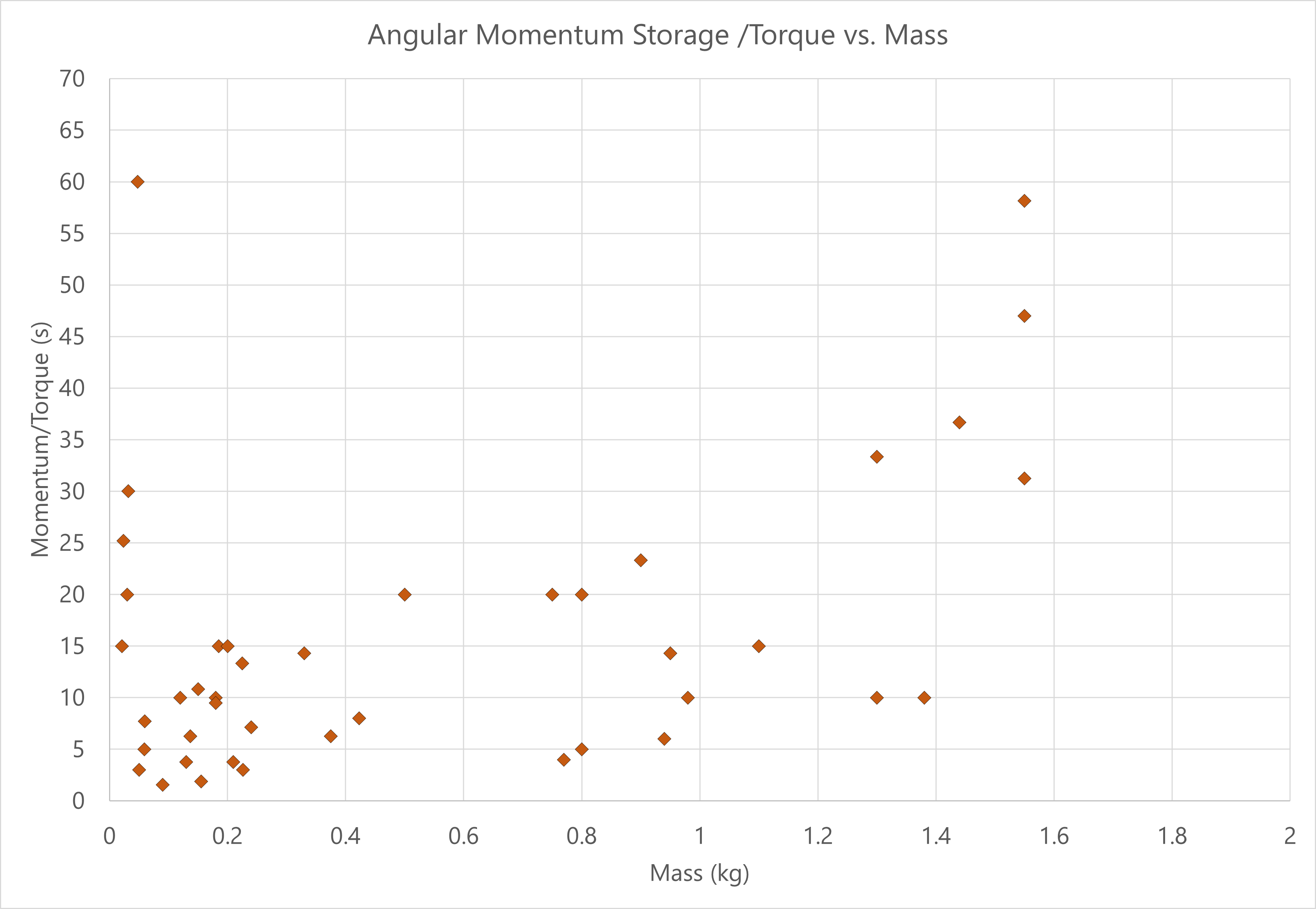
Torque vs. Power
With the exception of a couple of seemingly anomalous points, all vendors are about equally efficient when converting power to torque.

Price
The first plot shows much angular momentum storage you can get for your dollar. Not many vendors make their price public, most gives discounts when buying in sets of three, and most vendors will want to talk with you about your documentation/requirements expectations before giving you a price. Still, if you’re thinking you can get a simple reaction wheel for a few hundred dollars then this will nudge you to multiply that estimate by ten.
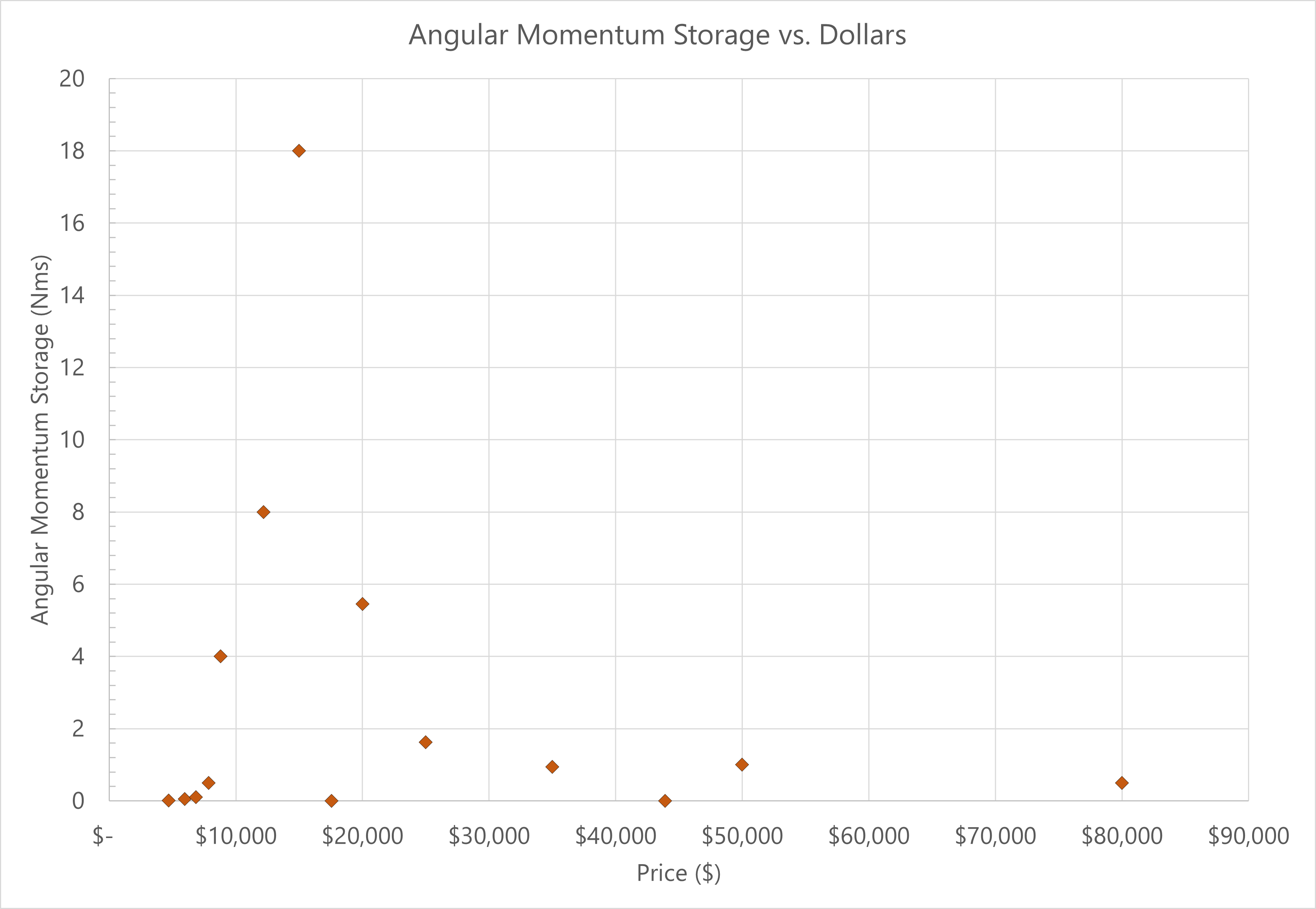
Another thing to consider is what comes with the price. Larger, more expensive wheels tend to come with integrated electronics and/or are designed for 15+ years of operations. Some will come fully tested and ready for integration. And some wheels are only designed to last a single year in orbit and come with marginal documentation.
The second plot gives you peak torque vs. price in dollars with the same caveats as above.
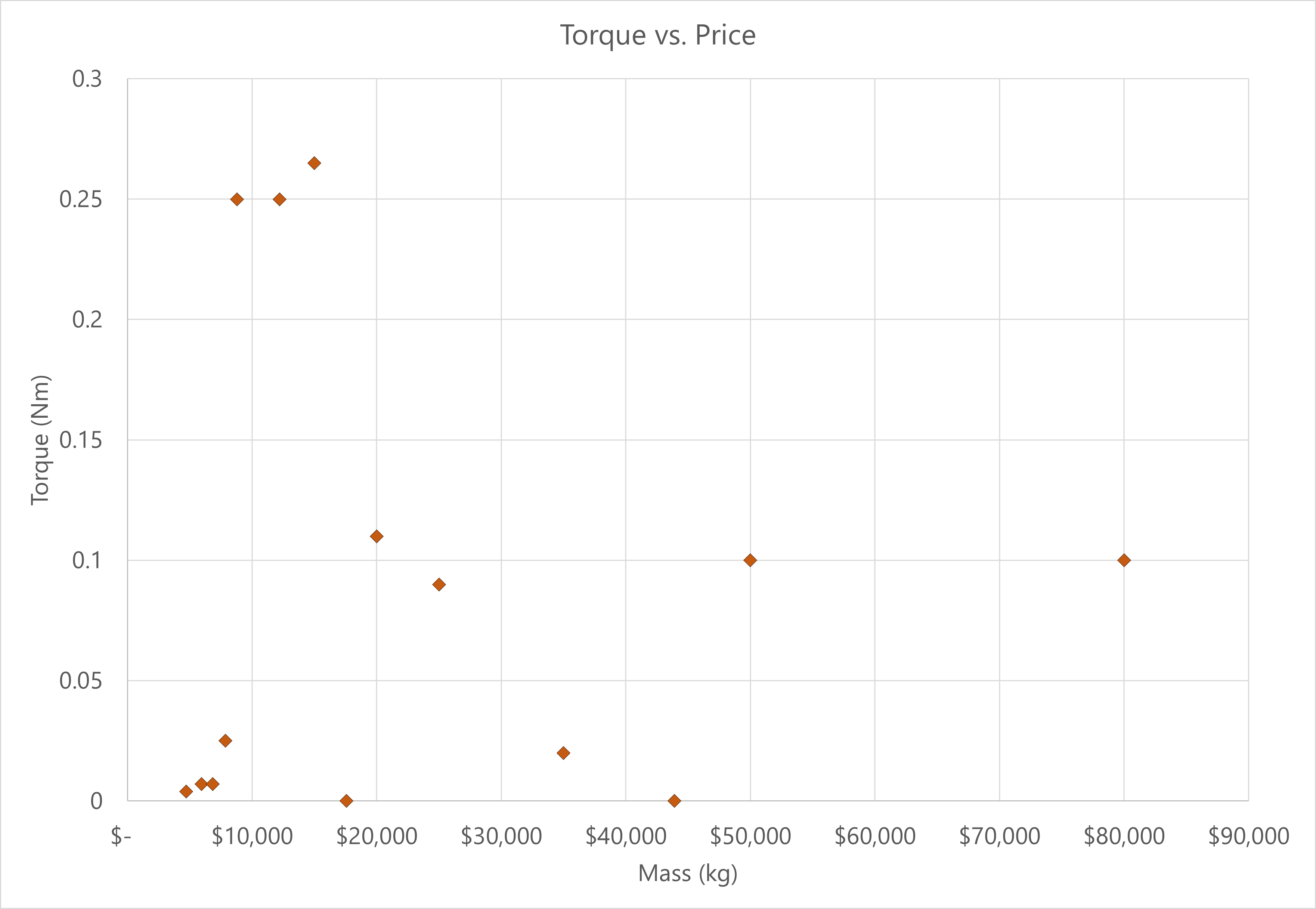
 Space Steps
Space Steps